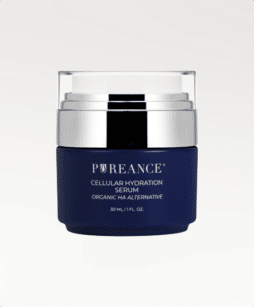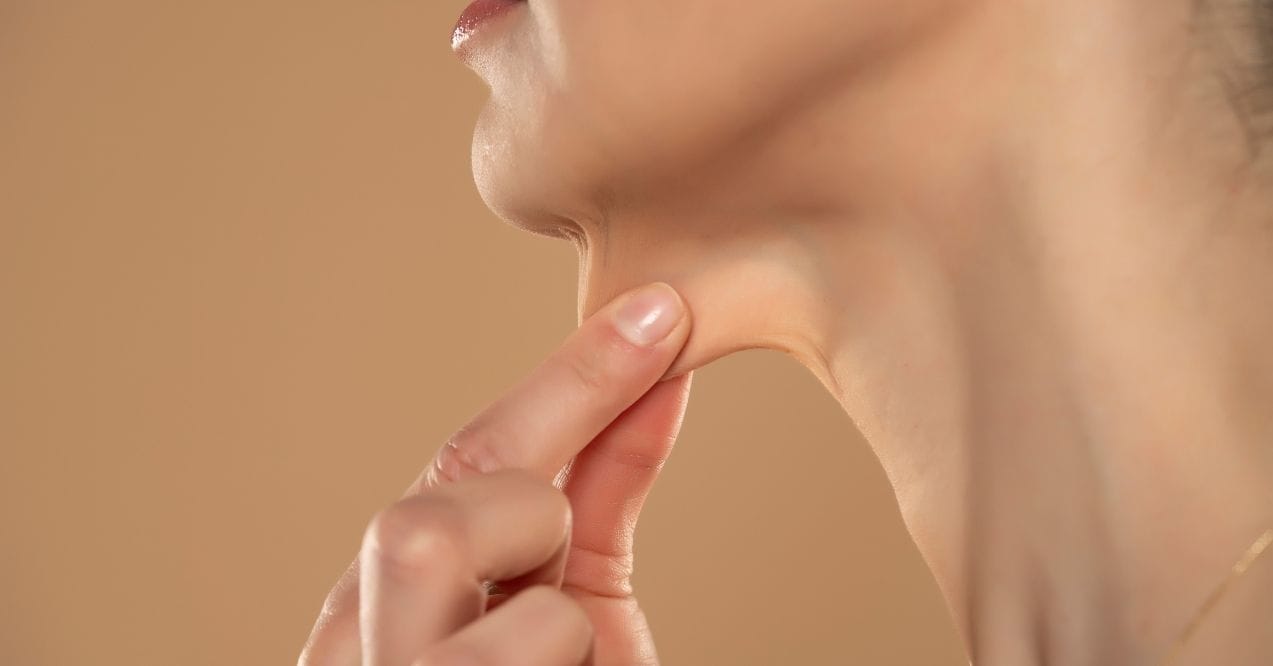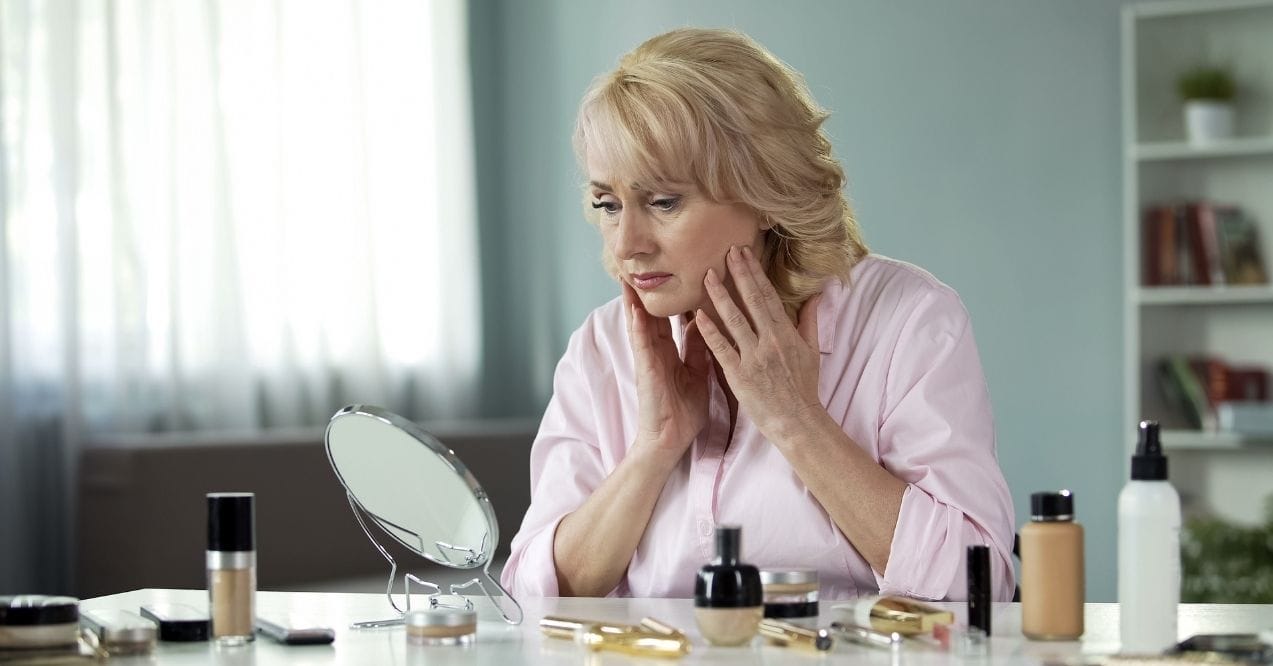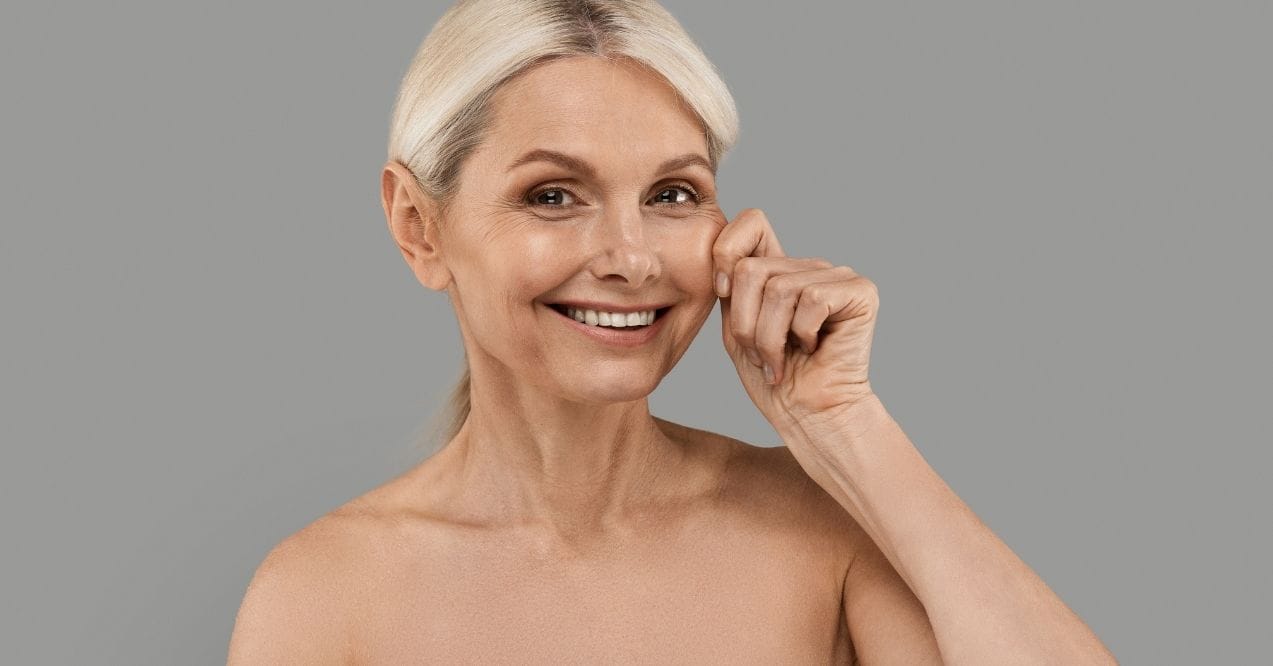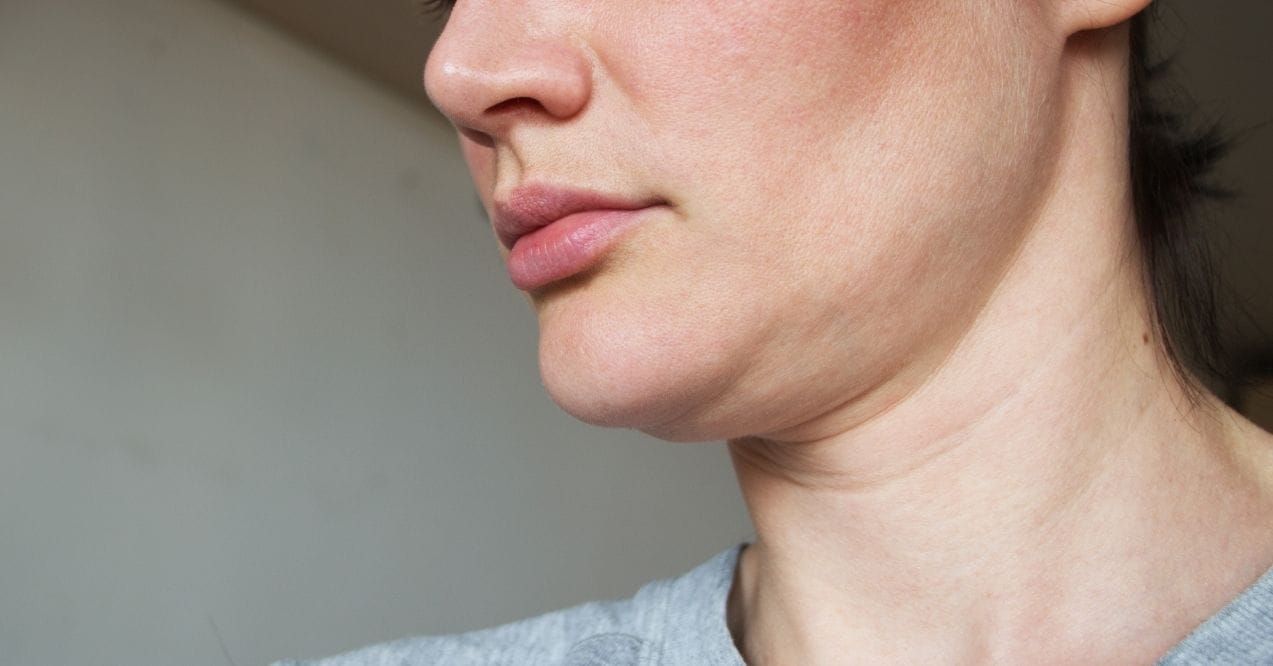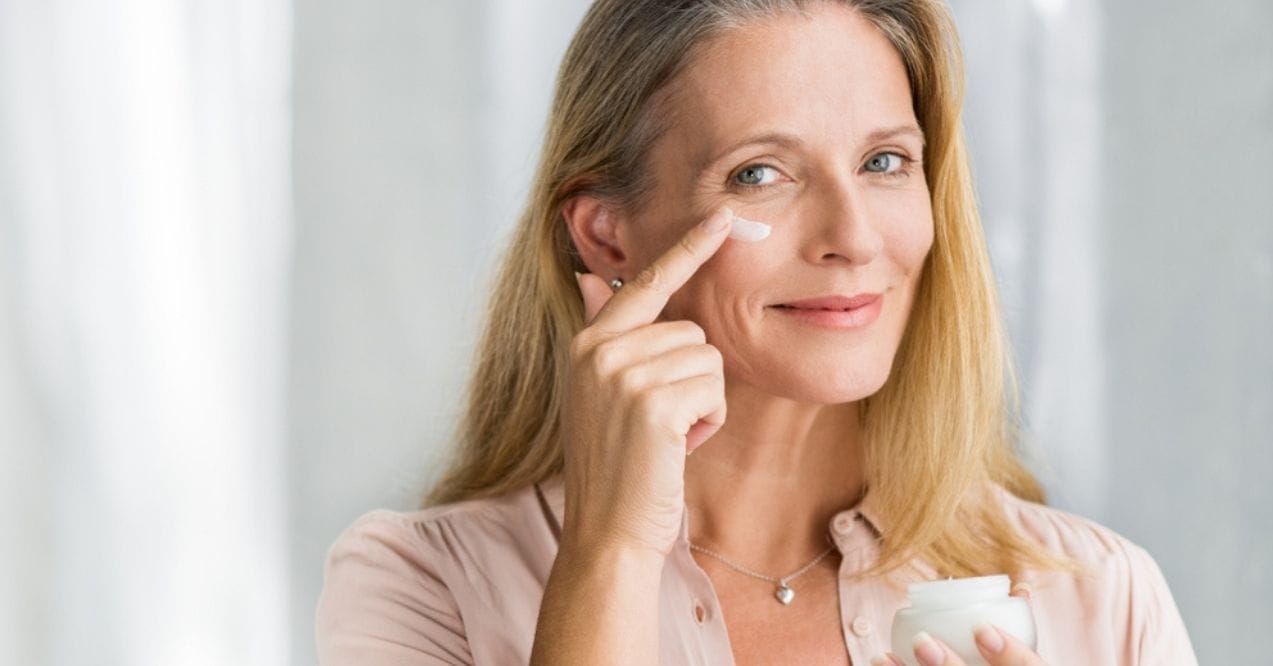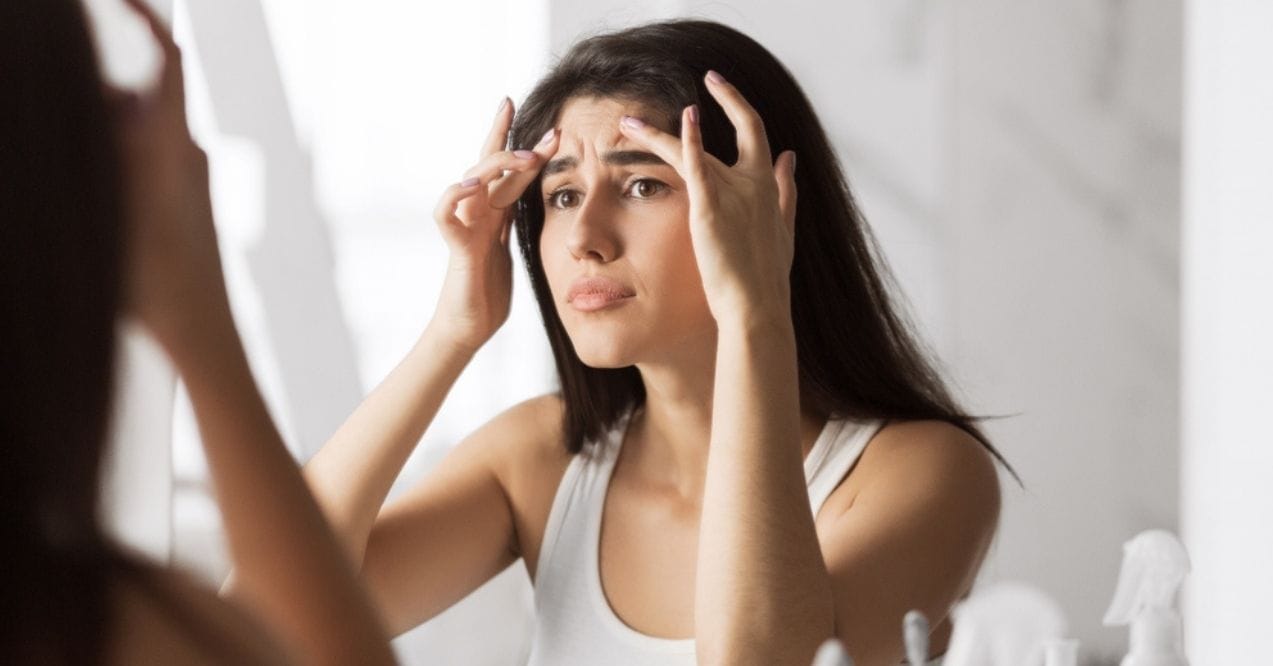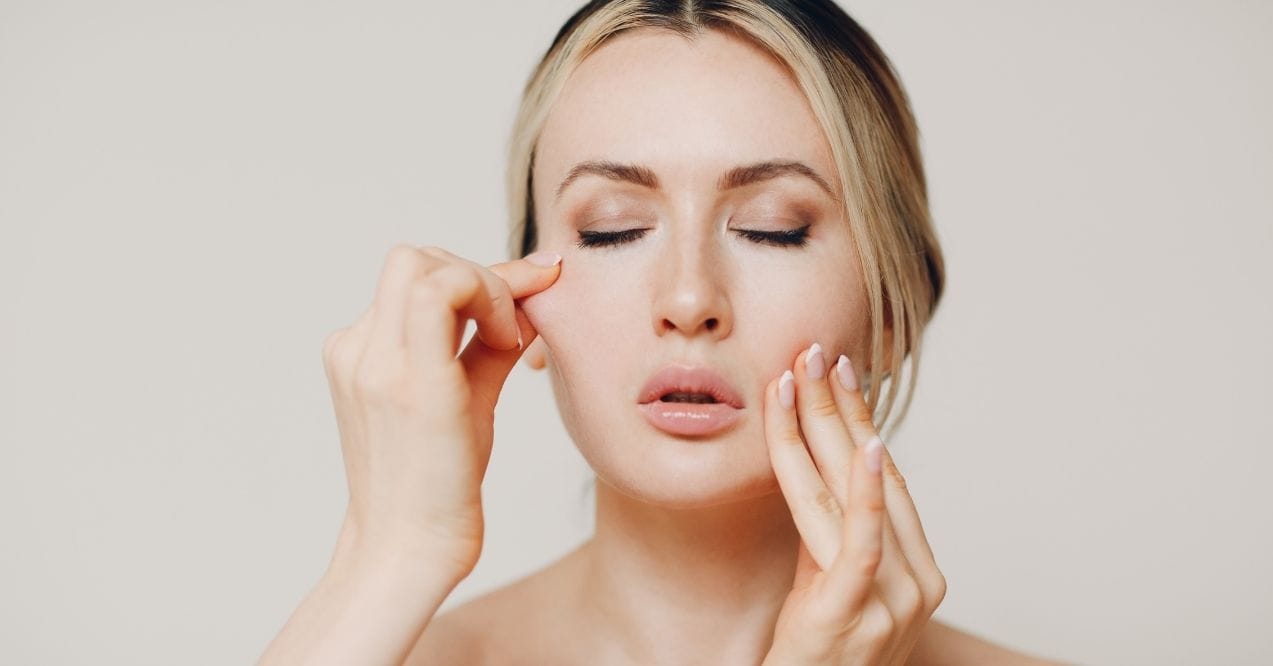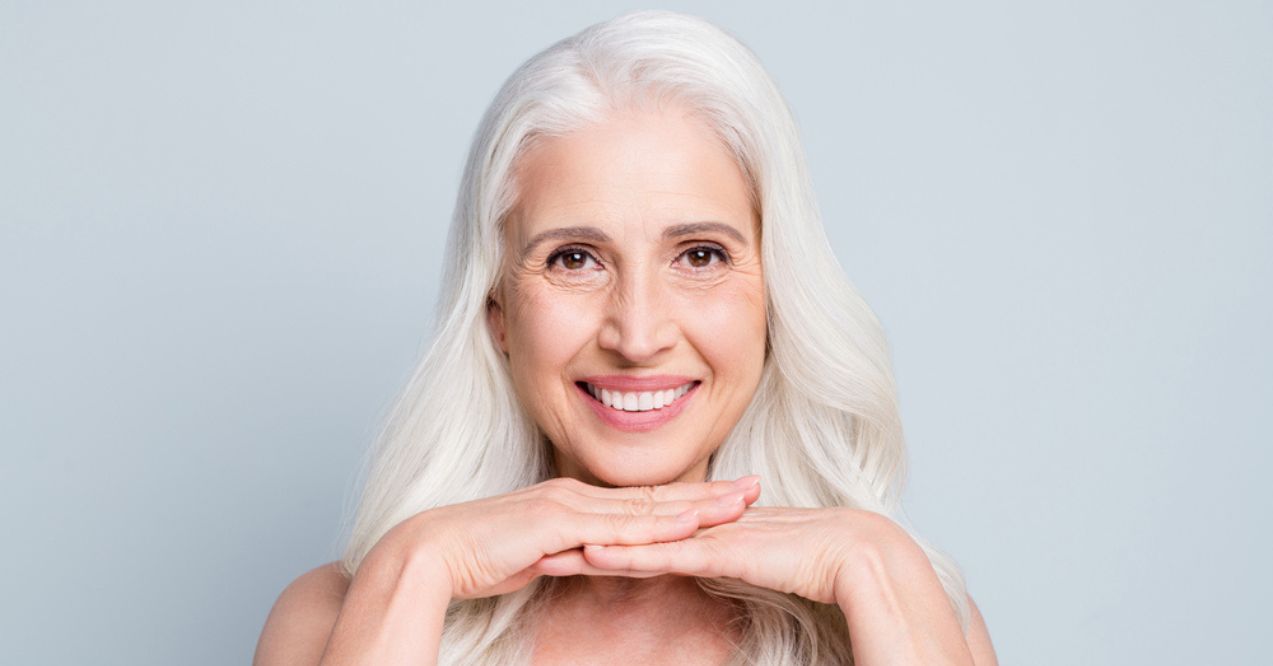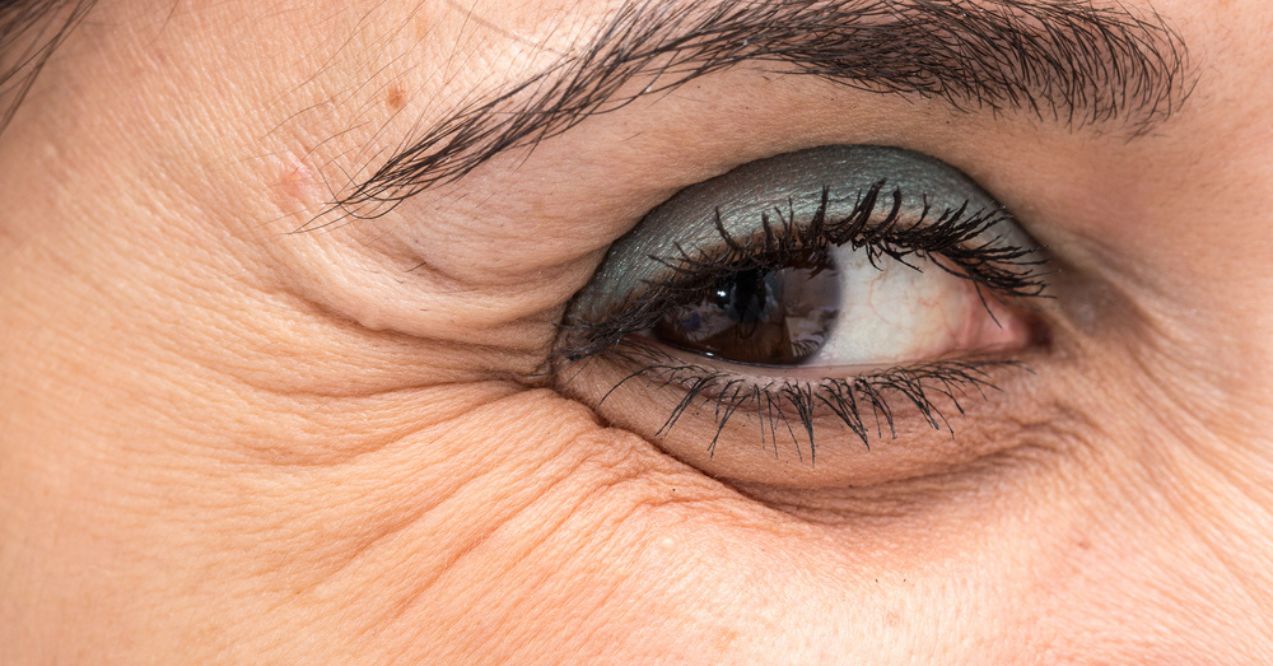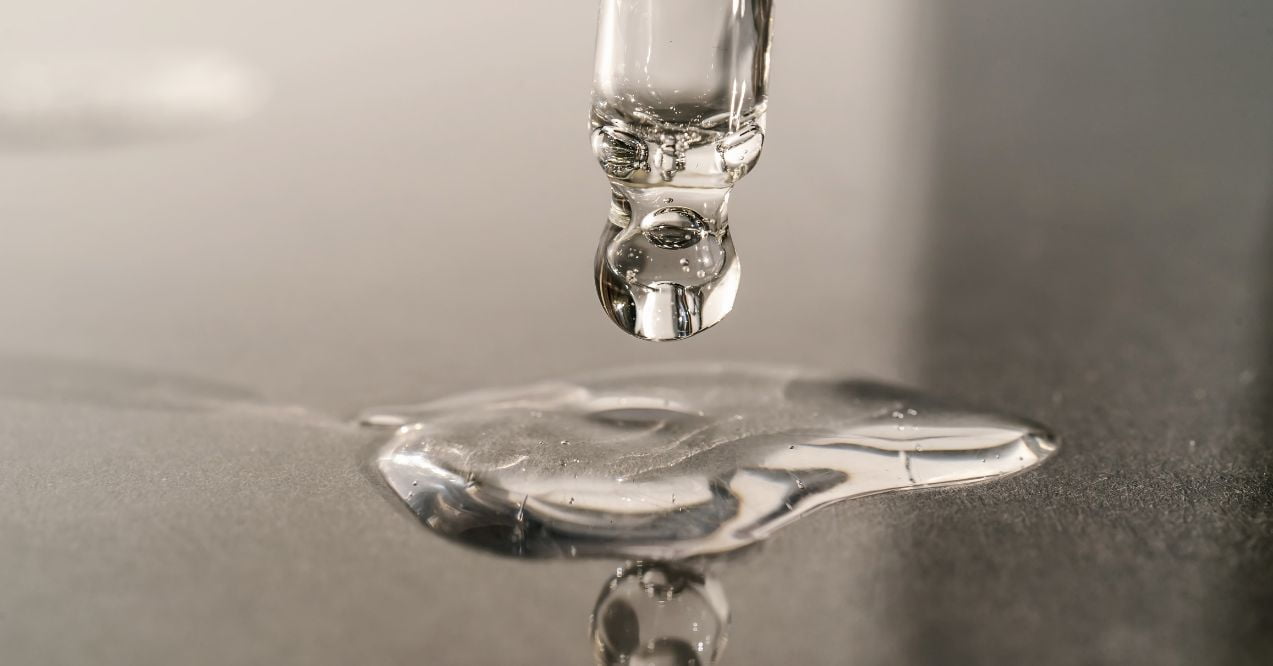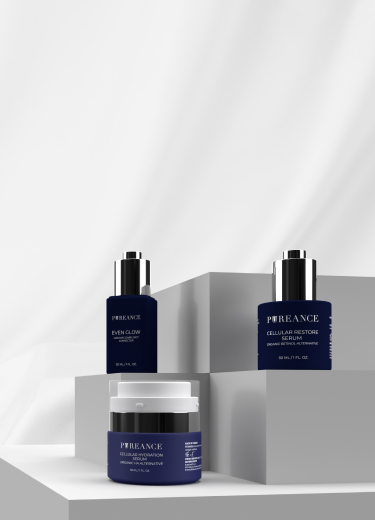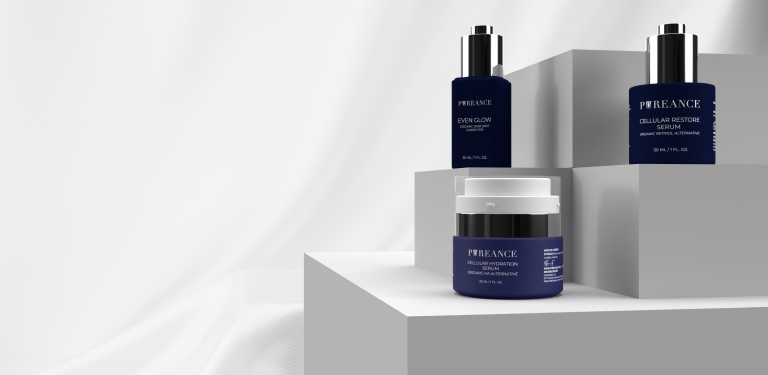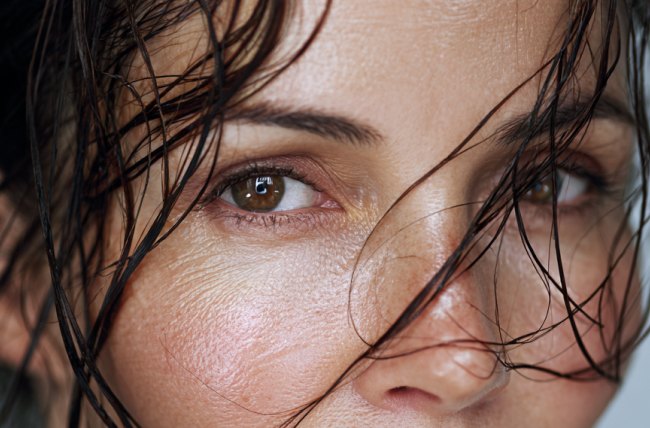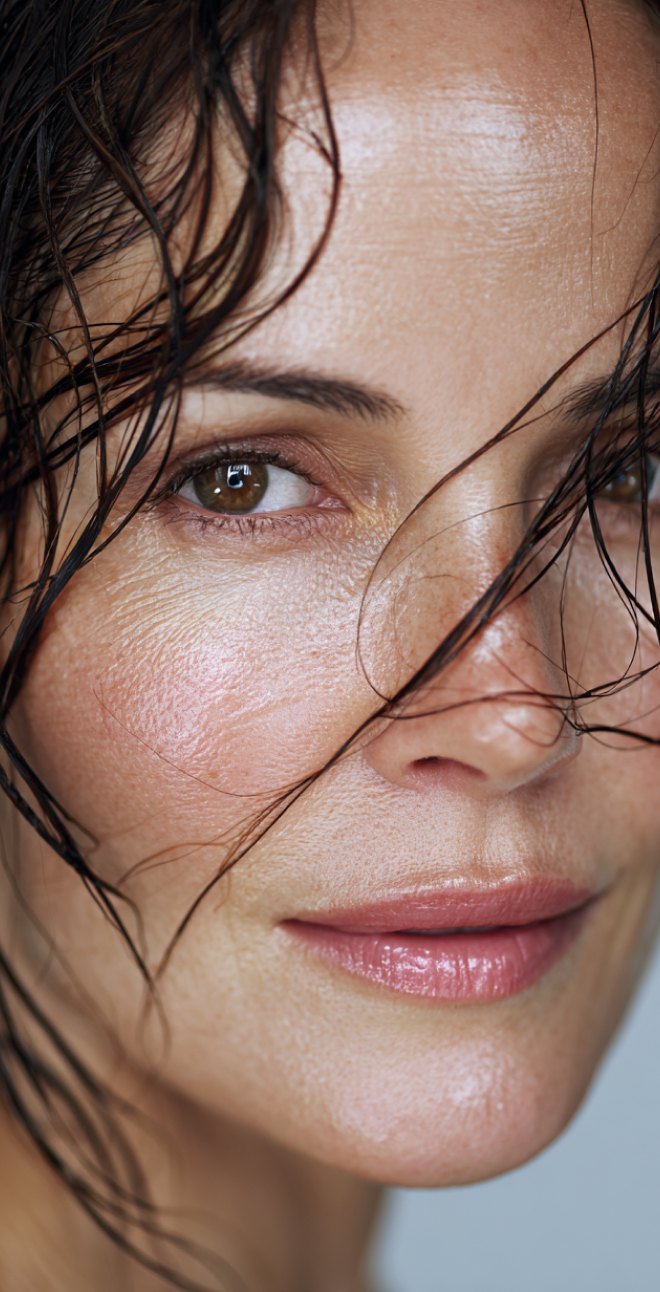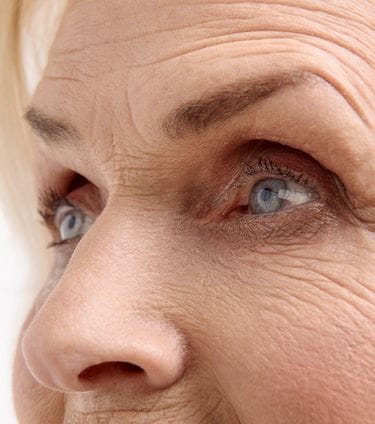
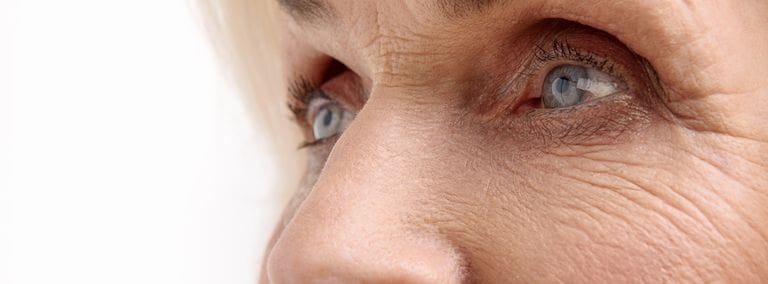

How to Get Rid of Crepey Skin
As we age, our skin naturally undergoes changes in texture and appearance. Perhaps one of the most common concerns is the development of thin, delicate skin with a crinkly texture that resembles crepe paper. This distinctive appearance often becomes more noticeable over time, particularly in areas frequently exposed to environmental factors like sun and pollution.
While many factors contribute to these skin texture changes, understanding how to get rid of crepey skin naturally begins with recognizing its characteristics and underlying causes.
Key Article Findings
- Layer hydrating products on damp skin for maximum moisture retention in crepey areas.
- Use area-specific approaches: gentle ingredients for eyes, upward motions for neck, rich moisturizers for body.
- Natural options like rosehip oil and green tea effectively support skin without harsh chemicals.
- Sleep, stress management, sun protection, and nutrition directly impact skin’s texture and resilience.
Appearance of Crepey Skin
Understanding what crepey skin looks like and where it commonly appears is the first step toward effectively addressing these texture changes.
What Crepey Skin Looks Like and Why It Happens
Crepey skin has a distinctive appearance with thin, delicate texture and fine, crinkly lines resembling crepe paper. This texture change occurs when skin loses moisture and supportive elements that maintain its firmness.
Key characteristics include:
- Paper-thin, fragile appearance
- Fine lines across larger areas
- Loss of natural plumpness
- Decreased elasticity when pinched
Contributing factors include the natural aging process, repetitive movements, and sun exposure which accelerate these changes over time.
Where It Shows Up Most Often
Crepey skin typically appears in areas with naturally thinner skin or frequent environmental exposure:
- Face (especially around eyes and cheeks)
- Neck area
- Upper inner arms
- Chest/décolletage
- Backs of hands
- Knees and thighs
These areas have fewer oil glands and natural supportive elements, making them more vulnerable to developing the characteristic paper-thin appearance.
How to Get Rid of Crepey Skin on Face
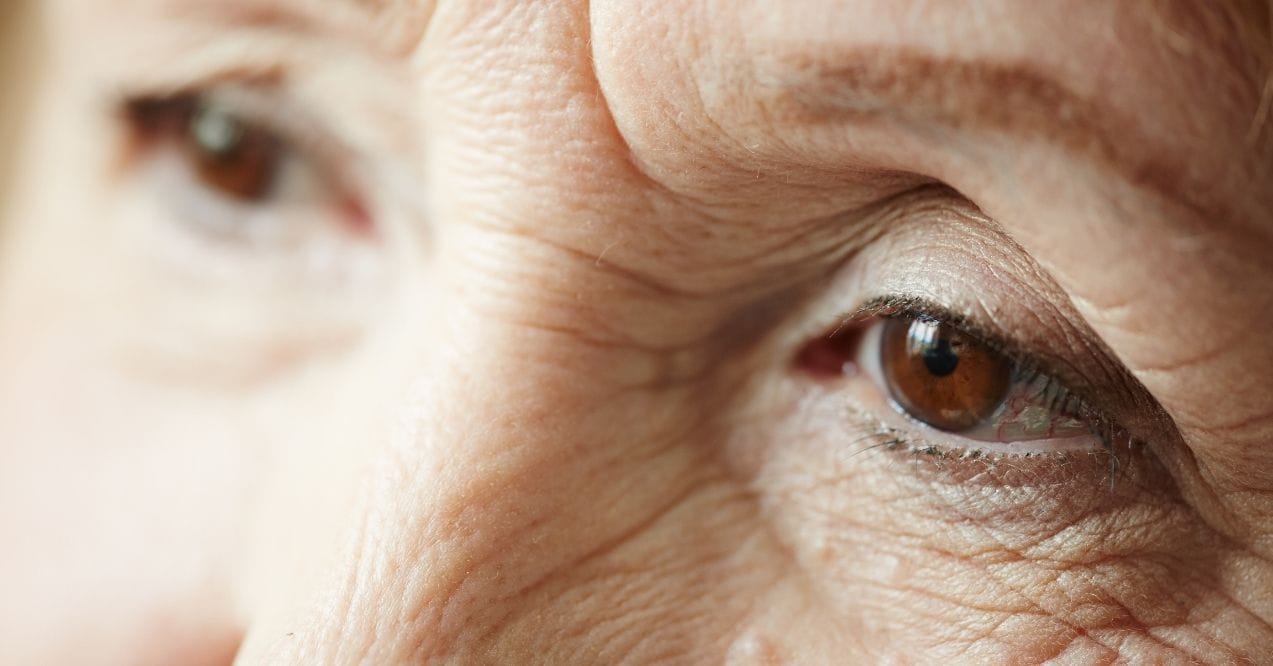
When addressing facial crepey skin, a consistent approach combining gentle exfoliation, intense hydration, and supportive ingredients delivers the best results. Understanding what helps crepey skin is essential for creating an effective routine that improves texture without causing irritation.
Skin Surface Renewal
Regular but gentle exfoliation plays a crucial role in improving the appearance of crepey skin by removing dull surface cells that contribute to an uneven texture.
For optimal results when considering how to exfoliate face with crepey skin:
- Choose chemical exfoliants like lactic or mandelic acid (1-2 times weekly)
- Avoid harsh physical scrubs that can damage delicate skin
- Look for enzyme-based exfoliants from pineapple or papaya for sensitive skin
- Always follow exfoliation with hydrating ingredients
Hydration and Barrier Support
Intense hydration forms the cornerstone of improving crepey skin appearance. Layer products from lightest to heaviest:
- Start with a hydrating toner or essence on damp skin
- Apply a water-based serum with humectants like glycerin
- Follow with a nourishing moisturizer containing ceramides
- Seal with facial oils like squalane or rosehip if needed
Smoothing Treatments and Consistent Routines
When considering what to do for crepey skin, incorporating gentle massage techniques can significantly improve appearance over time:
- Use facial rollers or gua sha tools with a facial oil
- Perform upward and outward motions for 5 minutes daily
- Try gentle fingertip tapping around delicate eye areas
- Be patient – visible improvements typically require 4-8 weeks of consistent use
Regular, gentle stimulation helps support circulation and maintain skin’s natural resilience without pulling or tugging on delicate areas.
Strategic Use of Antioxidants and Peptides
Incorporating specific active ingredients creates a comprehensive approach to improving crepey skin texture:
- The benefits of vitamin C serum include brightening skin tone, supporting collagen structure, and protecting against environmental stressors
- Apply vitamin C products in the morning under sunscreen
- Use peptide-rich products in evening routines to support skin’s overnight renewal process
- Consider bakuchiol as a gentle alternative if your skin is sensitive
How to Get Rid of Crepey Skin Under Eyes and Around Eyes
The eye area requires specialized care due to its unique structure and vulnerability to developing crepey texture earlier than other facial zones.
Under-Eye Area Support
The delicate under-eye region often shows crepey texture first because it’s naturally thinner (approximately 0.5mm thick compared to facial skin at 2mm) and contains fewer oil glands. For those wondering how to get rid of crepey skin under eyes, approach this area with particular gentleness:
Apply lightweight, water-based serums with hydrating ingredients like:
- Hyaluronic acid to draw moisture to the surface
- Squalane to lock in hydration without heaviness
- Caffeine to refresh tired-looking eyes
- Vitamin E to support skin’s moisture barrier
Use your ring finger (which naturally applies the least pressure) to tap products gently into skin. Never pull, tug, or drag the skin when applying products. Additionally, consider using an eye-specific product formulated for this delicate area to avoid potential irritation from formulas meant for less sensitive facial zones.
Outer Corners and Upper Lid Care
The outer corners and upper lids present different challenges with crepey appearance due to frequent movement from expressions and blinking:
Look for specialized ingredients for these areas:
- Peptides to support skin’s natural texture
- Bakuchiol as a gentle alternative to harsher ingredients
- Botanical oils like rosehip or evening primrose
Incorporate cooling techniques to minimize puffiness:
- Store eye products in the refrigerator
- Use chilled jade rollers or metal applicators
- Apply cool cucumber slices or tea bags for 5-10 minutes
Protect this vulnerable area daily with mineral sunscreen specifically formulated for eyes and wear UV-protective sunglasses to prevent squinting and shield the delicate skin from environmental damage that accelerates crepey texture formation.
How to Get Rid of Crepey Skin on Neck and Body
The neck’s thin skin structure, constant movement, and frequent sun exposure make it particularly vulnerable to developing crepey texture. For those wondering how to get rid of crepey skin on neck, a dedicated approach yields the best results:
- Always extend facial products down to the neck and décolletage
- Apply products using gentle upward strokes to avoid pulling downward
- Layer specialized peptide serums under richer creams at night
- Use dedicated neck products containing ingredients like niacinamide
- Apply SPF daily to protect this often-neglected area
- Consider silk pillowcases to reduce friction during sleep
Supporting Skin on Arms, Legs, and Hands
Body skin develops crepey texture primarily due to sun exposure, friction, and natural aging processes:
- Exfoliate limbs once weekly with a gentle body scrub or chemical exfoliant
- Apply moisturizers immediately after bathing while skin is still damp
- Choose thicker, occlusive formulas containing shea butter or ceramides
- Massage products using circular motions to enhance absorption
- Pay special attention to commonly exposed areas like hands and upper arms
- Reapply moisturizer throughout the day to chronically dry areas
How to Get Rid of Crepey Skin Naturally (Face + Body)
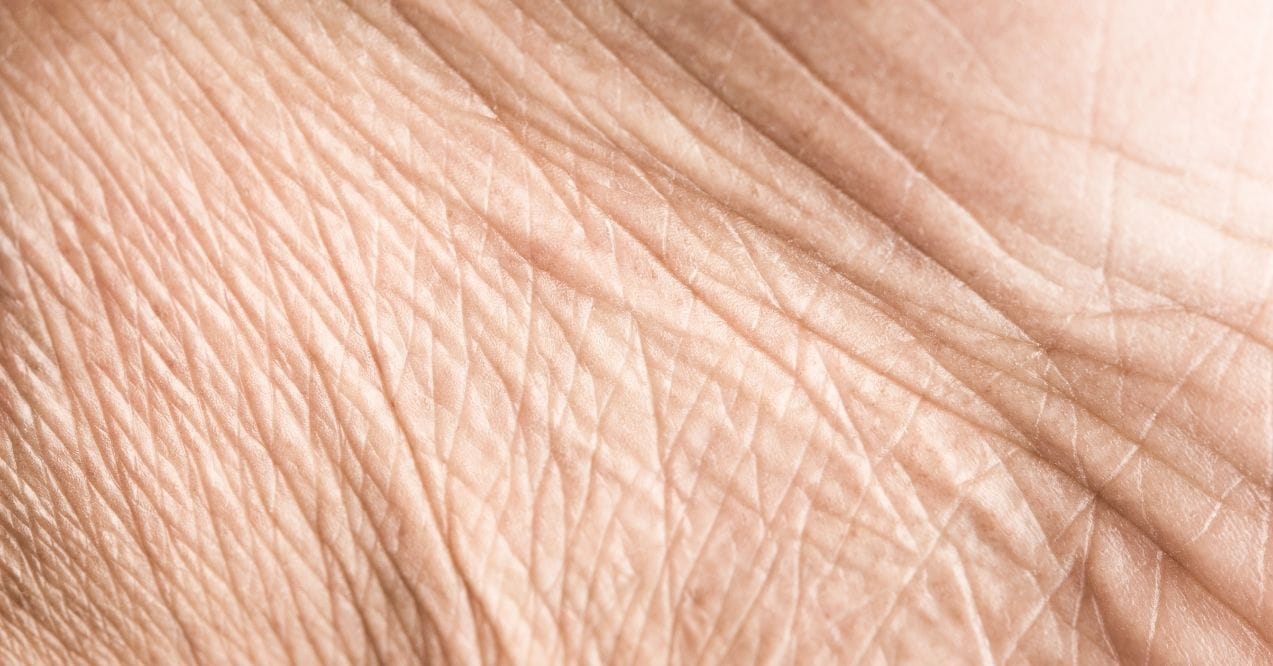
For those seeking natural approaches to address crepey skin, plant-based ingredients and gentle practices can effectively support skin’s appearance.
Nature-Based Oils and Botanicals
Plant-derived ingredients offer powerful support for crepey skin without harsh chemicals:
- Rosehip oil delivers essential fatty acids that help maintain skin’s natural moisture
- Aloe vera provides immediate hydration while soothing irritated skin
- Shea butter creates a protective barrier that locks in moisture on both face and body
- Green tea benefits for skin include powerful antioxidants that support the appearance of smoother, more resilient skin
Apply these natural ingredients to freshly cleansed, slightly damp skin for maximum absorption. When using on the face, start with lighter formulations like rosehip oil, followed by heavier butters on the body where skin tends to be naturally drier.
Natural Tools and Practices
Complement botanical ingredients with gentle physical techniques to enhance results:
- Facial massage with fingertips or jade rollers stimulates circulation for a refreshed appearance
- Gua sha tools can be used with facial oils to support natural contours
- Dry body brushing before bathing helps remove surface cells while supporting circulation
- Silk pillowcases reduce friction and compression lines during sleep
- Consistent hydration through drinking water supports overall skin health from within
Lifestyle Habits That Show Up in Your Skin
The daily choices we make significantly impact our skin’s resilience and appearance, especially when addressing crepey texture concerns.
Sleep, Stress, and Skin Appearance
The connection between lifestyle factors and skin health becomes increasingly apparent as we age:
- Chronic stress triggers cortisol production, which can accelerate the breakdown of supportive structures in skin
- Sleep deprivation reduces the skin’s overnight recovery process, contributing to thin, papery appearance
Those researching how to get rid of crepey skin on face should consider implementing:
- A consistent sleep schedule with 7-8 hours nightly
- Evening digital device limits to improve sleep quality
- Brief meditation or breathing exercises (even 5 minutes) during stressful days
- Gentle evening facial massage to release tension in facial muscles
Skin-Supporting Nutrition and Hydration
What you consume directly influences your skin’s ability to maintain moisture and resilience:
- Focus on colorful fruits and vegetables rich in antioxidants
- Include sources of omega-3 fatty acids like walnuts, flaxseeds, and fatty fish
- Maintain consistent hydration with water and herbal teas
- Consider limiting dehydrating beverages like alcohol and excessive caffeine
- Reduce processed foods high in refined sugars and sodium, which can contribute to moisture loss
- Avoid extreme or restrictive diets that may deprive skin of essential nutrients
Conclusion
Addressing crepey skin requires a multifaceted approach combining targeted skincare, gentle physical techniques, and supportive lifestyle habits. By understanding how to get rid of crepey skin through consistent hydration, appropriate ingredients, sun protection, and natural supportive practices, you can effectively improve skin’s appearance.
Patience and consistency are key – implementing these strategies regularly over time will yield the most noticeable and sustainable improvements in skin texture, resilience, and overall appearance.
Use specialized eye products with peptides and hyaluronic acid, apply with gentle tapping motions, avoid rubbing or tugging, incorporate cooling tools like jade rollers, and protect the area with mineral sunscreen and UV-blocking sunglasses daily.
Consistent hydration with layered moisturizing products, gentle exfoliation to remove dull surface cells, antioxidant-rich ingredients like vitamin C, adequate sleep, stress management, and proper nutrition all contribute to smoother, more refreshed-looking skin texture.
Apply lightweight hydrating serums with squalane or hyaluronic acid, gently tap products with your ring finger, use cooling cucumber slices or tea bags, ensure proper hydration, and maintain consistent sleep patterns for best results.
Exfoliate weekly, apply rich moisturizers on damp skin, use occlusive ingredients like shea butter, massage in circular motions, protect with SPF daily, and reapply hydrating products throughout the day to maintain moisture levels.
Expect visible improvements within 4-8 weeks of consistent care. Surface hydration shows immediate temporary benefits, while deeper structural improvements require at least a month of dedicated daily routines and product application.
This site offers health, wellness, fitness and nutritional information and is designed for educational purposes only. You should not rely on this information as a substitute for, nor does it replace, professional medical advice, diagnosis, or treatment. If you have any concerns or questions about your health, you should always consult with a physician or other health-care professional. Do not disregard, avoid or delay obtaining medical or health related advice from your health-care professional because of something you may have read on this site. The use of any information provided on this site is solely at your own risk.
Nothing stated or posted on this site or available through any services are intended to be, and must not be taken to be, the practice of medical or counseling care. For purposes of this agreement, the practice of medicine and counseling includes, without limitation, psychiatry, psychology, psychotherapy, or providing health care treatment, instructions, diagnosis, prognosis or advice.
